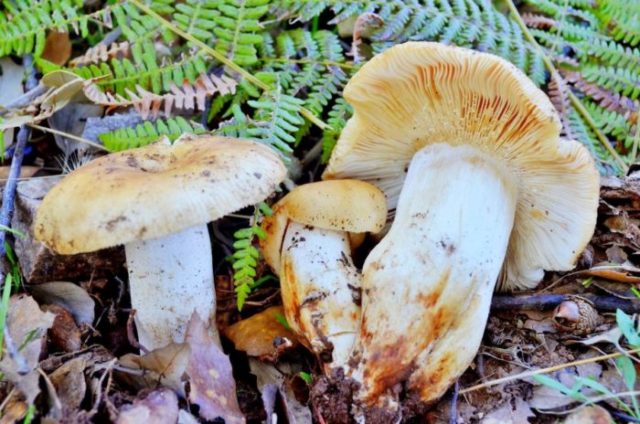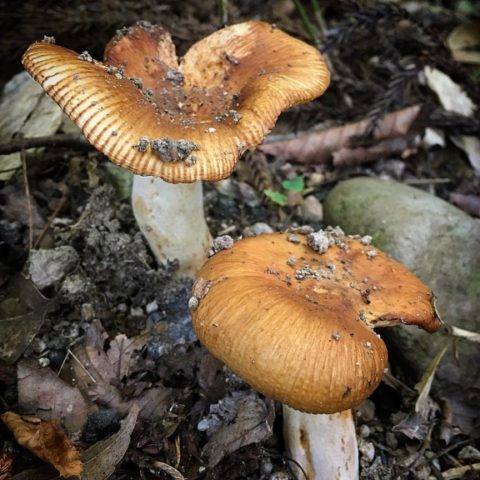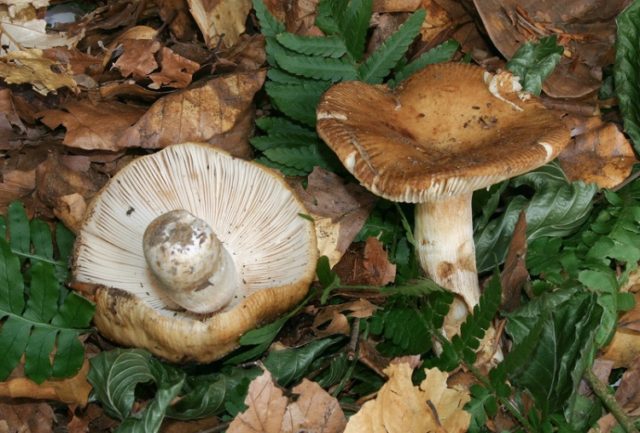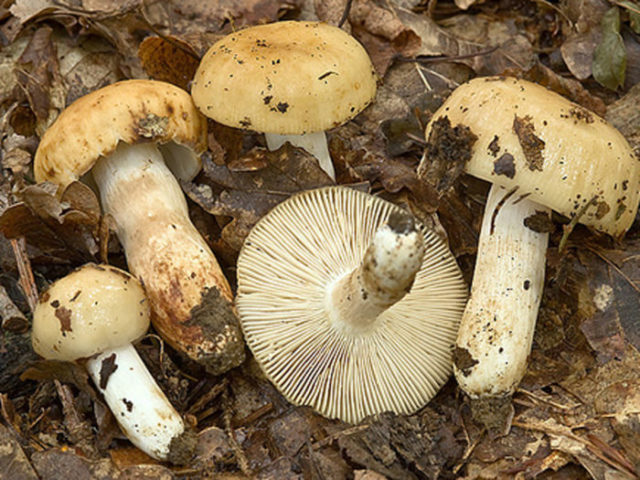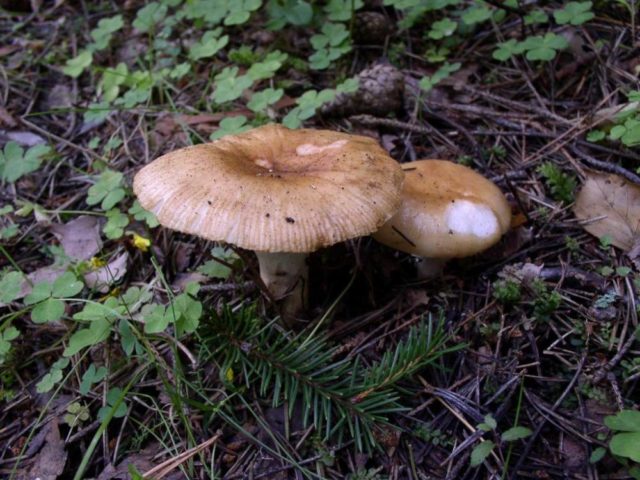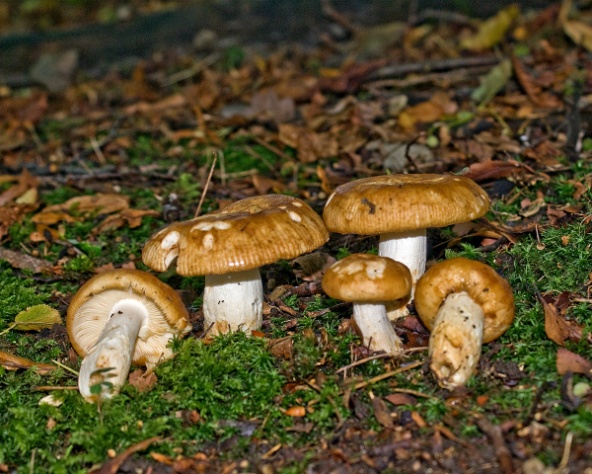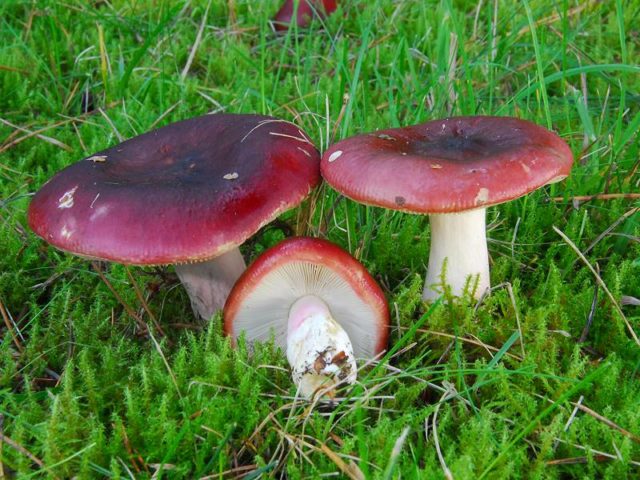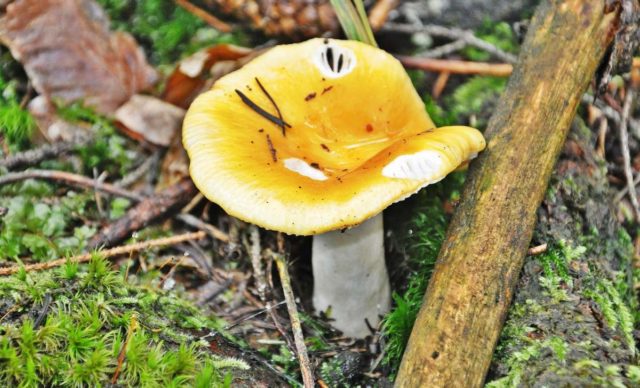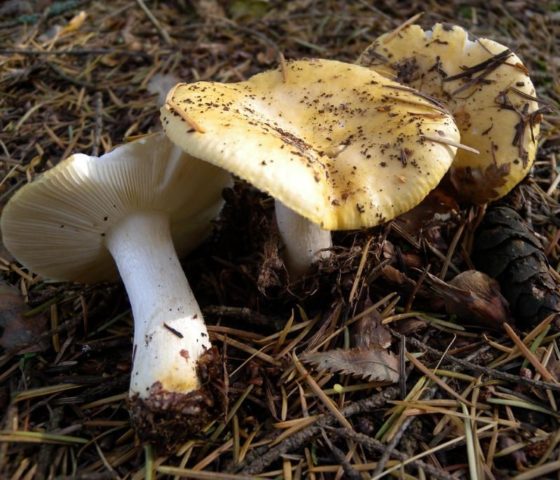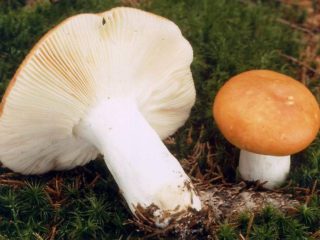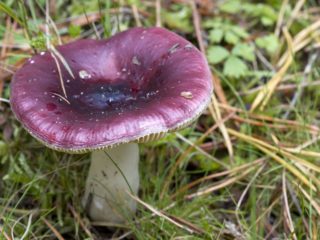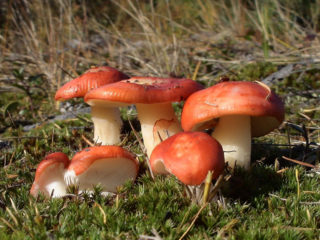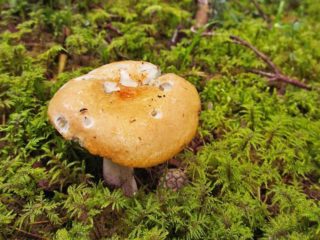Content
The russula mushroom is known to many, but it is rarely found on the home table. It is rare to see in dishes and preparations such a variety as almond russula. It will be especially appreciated by connoisseurs of the nutty spicy aroma, thanks to which it got its name. Otherwise, it is also called cherry laurel (due to the similarity in smell with the drug of the same name).
Where almond russules grow
Almond russula can be found in deciduous or mixed forests, very rarely in conifers. The most favorable conditions for its growth are in oak and beech plantings. This representative of the Syroezhkovs grows singly, occasionally there are small groups.
The fruiting period is quite long - mushrooms can be harvested throughout the summer and autumn.
What do almond russules look like?
The cap of the almond russula gradually changes as the fungus grows: at first it is raised, bell-shaped, then it becomes almost flat, and by the end of ripening it is concave, with a pronounced depression in the center.
The color also depends on age: from sandy yellow in young specimens to deep brown in older ones.
The cap is round in shape, in mature mushrooms it is ribbed at the edges. Its average diameter is 5 - 8 cm. The pulp is white, very fragile, does not change color at the site of the cut.
The lower edge of the cap consists of plates of different lengths, partially fused with the stem. Their color can be milky, beige or cream, and in old mushrooms - reddish. The spore powder is usually white, and the spores themselves are round, colorless.
The leg of this species has a regular cylindrical shape. It is smooth to the touch, but inside it is porous and easily breaks. The color goes from brownish - in its lower part to white - closer to the cap. The leg height is 7-10 cm.
Is it possible to eat almond russules
Despite its specific taste and unusual aroma, almond russula is undoubtedly an edible mushroom. It can be used both for preparing hot dishes and for salting for the winter. During processing, the mushroom does not lose its pronounced pleasant aroma.
Taste qualities of almond russula
The hat of this variety of russula does not have pronounced taste shades. It can be distinguished from other mushrooms only by its almond smell. The leg is quite another matter. It has a pronounced burning taste, which is why not many people dare to use an almond russula for cooking any dishes.
Benefit and harm
Almond russules, like any other mushrooms, have both beneficial properties and contraindications for eating.
They are very nutritious due to the high amount of protein in the composition, while they contain very few calories. This quality allows you to use it for the preparation of dietary meals for people seeking to get rid of extra pounds.
The composition of laurel russules includes a large number of micro- and macroelements: such as phosphorus, potassium, iron, calcium, magnesium, as well as vitamins of group B, C, E and PP. All these substances are necessary for the balanced functioning of various systems in the human body.
In addition, mycologists note the content of lecithin in the product - a substance that prevents the deposition of cholesterol on the walls of blood vessels, which has a beneficial effect on the functioning of the circulatory system and the state of the heart.
Such mushrooms are well absorbed without causing a feeling of heaviness and discomfort in the digestive organs. It is believed that they help cleanse the body by removing harmful substances and toxins. But all from their use should be refrained from people with diseases of the gastrointestinal tract, especially in the acute phase. Healthy people should limit themselves to portions of no more than 150-200 g.
Any mushrooms in a pickled or fried form are strictly contraindicated for problems with the liver and gallbladder, since they put a very heavy load on these organs.
Russula should not be included in the diet of children under 6 years of age. The digestion of such mushrooms requires a significant participation of enzymes that are not produced by the child's body in the proper volume.
It is important to remember the danger when collecting to confuse edible specimens with poisonous counterparts similar to them. Therefore, you should not use russula, the appearance of which raises any doubts.
False doubles
Although russula has a distinctive, recognizable aroma, it can often be confused with some other mushrooms in appearance.
Young specimens are very similar to Values. The main difference is in the size of these species. Valui is much larger and also has a pungent taste and unpleasant odor. Such a mushroom grows exclusively in birch plantings.
There are also doubles among close “relatives”. One of these is the Morse russula. The difficulty is that the double has a similar color and almond smell. However, there is still a difference: although the Morse hat has the same yellow-ocher color, it sometimes casts purple. And the pulp of this variety has a pronounced pungent taste.
Another similar mushroom is aromatic russula. It is lower than the almond one, has smooth edges of the cap, in contrast to the ribbed ends of its "relative", and the cap itself has a reddish tint. Despite the fact that the scent also has notes of almonds, anise aroma is felt in it.
The light yellow russula is very similar in appearance to the almond one. You can recognize her by her pleasant floral scent. In addition, the pulp of the light yellow representative does not have a pronounced pungent taste.
The ocher russula has almost the same hat. Her leg is more watery, with a gray tone, and the surface of the cap is almost always wet, slimy. The taste of this mushroom is unexpressed, neutral, without bitterness. There is also no characteristic almond smell.
Eating russula almond
Almost all types of russula are perfect for both cooking hot dishes (frying, stewing) and preparing preparations for the winter. The only limitation in using the almond variety for food is the specific burning taste of the leg and its bright aroma.
Before cooking, any forest mushrooms must be thoroughly washed, cleaned by prying and removing the skin, then cut out the middle. You need to cook them right away, avoiding darkening of the pulp.
Especially delicious are fried russula with potatoes, as well as pickled and salted. Canned items must be stored in the refrigerator or cellar. Almond russula can be eaten within 10 - 14 days after salting.
In addition, all varieties of russula contain the enzyme russulin, which ferments milk, so they are often used to make cottage cheese and cheeses.
Conclusion
Almond russula is a mushroom with a somewhat unusual taste and a bright characteristic aroma. It can be used for preparing a variety of hot dishes, as well as for winter preparations. It has many beneficial properties due to the vitamins, micro- and macroelements it contains.
